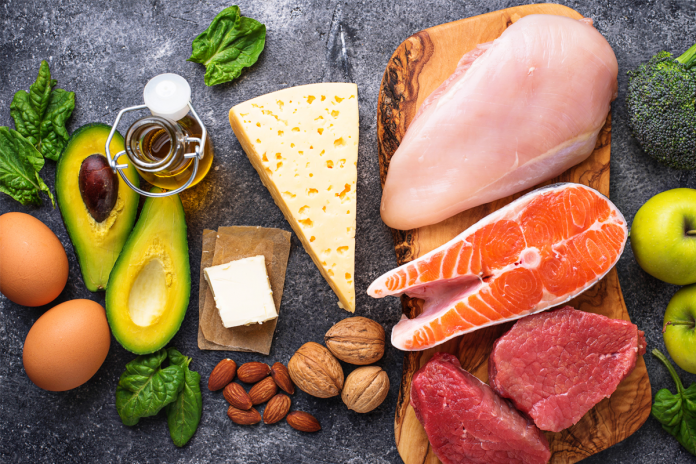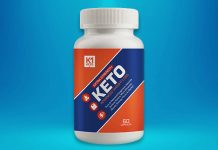CHICAGO — Medical doctors began using a high-fat, moderate-protein and very low-carbohydrate diet — what today is referred to as ketogenic — to control seizures in patients with epilepsy in the 1920s. Fast-forward 90 years and this eating pattern became associated with weight loss. Mainstreaming started around 2018 after several celebrities endorsed the diet as a quick way to shed unwanted pounds. Food marketers were skeptical on the longevity of its popularity, and only a few jumped on the bandwagon with products marketed as keto-friendly. Bakers wanted this four-letter word to just go away.
Enter the coronavirus (COVID-19) pandemic. Consumers’ waistlines started expanding from overconsumption of comfort foods, fueling the popularity of keto. And now, formulators of baked goods are trying to keep their products on the menu by eliminating carbohydrates and replacing them with healthful fats, protein and fiber.
“Early on, ketogenic products appealed primarily to keto-diet enthusiasts, but now they have a more mainstream following,” said Courtney LeDrew, marketing manager, Cargill. “While these consumers might not be looking to follow a strict keto diet, they are interested in trying some one-off keto products, perceiving them as healthier choices.”
Mintel’s “Nutrition Watch: What’s Next for Keto” report from November 2021 states that while only 5% of consumers in the United States follow the keto diet, 64% of keto dieters plan to stick with it. New bakery products with a keto claim increased more than 100%, with baking mixes, cookies and breads the top-three categories.
“If the mention of keto continues to signify a healthier bakery product and those bakery products deliver on flavor and are not priced at too high a premium, keto-friendly products will continue to grow,” said Max Maxwell, manager-market insights, Glanbia Nutritionals. “The key to growth is appealing to the 95% of consumers who want healthier products but are unlikely to commit to a keto diet.”
Net carbs are the enemy
The keto weight-loss regime emphasizes a diet that is about 70% fat, 20% protein, and 5% each simple carbohydrates and non-starchy vegetables. Such a diet forces the body into a metabolic state known as ketosis, which is when the body burns fat instead of carbohydrates for energy. The liver converts fat into fatty acids and ketone bodies, with the latter traveling to the brain and fueling the body, the traditional role of glucose obtained from carbohydrates. Burning ketones in place of glucose is associated with weight loss, reduced inflammation, sustained energy and more.
Foods labeled keto-friendly appeal to consumers who are limiting sugar and total carbohydrate intake.
Keto is not legally defined; however, most keto dietary plans suggest a daily intake of less than 30 grams of net carbohydrates. To put that in perspective, three Oreo cookies contain 24 grams of net carbohydrates. While “net carbohydrates” is also not legally defined, it refers to carbohydrates that the body digests and includes sugars naturally found in everything from fruit to milk, as well as caloric carbohydrates, such as wheat flour, oatmeal and other grains. Most calculations are made by taking the total carbohydrates in a food and subtracting fiber and sugar alcohols.
The main challenge with yeast-leavened applications is creating a flour replacement system that not only is low in carbohydrates but also functional, Daniel Marciani, research manager, bakery, Glanbia Nutritionals, pointed out.
“Once this is accomplished, the manufacturer still encounters the issue of supplying yeast with fermentable sugars while not adding sugar to the mix,” he said. “Bread does not necessarily need sugar to rise, but it helps to hit short proof times.”
Tim Christensen, certified master baker, Cargill, suggested that bread is the most challenging baked food for keto-friendly formulation.
“Trying to get rid of all those carbs and still create something that resembles traditional bread is no easy task,” he said. “One of the biggest challenges with keto in breads, as well other baked goods, centers on moisture. When you take out starches and other carbohydrates, you’re also taking out all the ingredients that hold water. Formulators tend to replace these ingredients with nut flours, which hold very little moisture. As a result, you wind up with products that are often very dry.”
MGP Ingredients offers an RS4 resistant wheat starch (greater than 90% total dietary fiber on a dry basis) and several wheat protein isolates as part of its keto ingredient solutions line. This makes it possible to create yeast-leavened and chemically leavened baked foods, everything from breads to bagels and cakes to cookies.
“Yeast-leavened keto-friendly bakery products are challenging to formulate because the conventional use of sugar, a high-carbohydrate source, for flavor and as substrate for the yeast is typically avoided,” said Tanya Jeradechachai, vice president of ingredient solutions, MGP Ingredients Inc. “This results in a finished baked product with a light-colored crust (less browning) and a smaller loaf volume due to less leavening action by the yeast.”
Starch is another critical component of wheat flour that isn’t keto-friendly but very functional in a bread formulation. Ms. Jeradechachai said the company’s RS4 resistant wheat starch functions in a similar way to wheat starch in baking while still minimally contributing to net carbs.
“When we use the wheat RS4 in baking, we also incorporate wheat proteins to impart viscoelastic properties,” Ms. Jeradechachai said. “We have six wheat protein isolates that differ in their elasticity and extensibility properties and can provide clean label opportunities.”
Corbion developed a keto-friendly yeast-leavened bread. Key ingredients are resistant starch, wheat protein isolate, vital wheat gluten, oat fiber, yeast, oil/shortening, salt, inulin and enzymes. The enzymes improve dough structure, which results in higher loaf volume and finer cell structure. They also enhance crust color and provide some sweet flavor without significantly changing the total net carbohydrate content.
Non-keto-friendly ingredients — wheat flour, sugar, starch — provide some of the most significant functionality in baked goods.
“The tenderness you get from soft wheat flour and sugar can be difficult to match,” said Brook Carson, vice president of research and development, Manildra Group USA. “It can be done with a strategic balance of proteins and fibers.”
Manildra Group’s keto ingredient system includes resistant wheat starch, which provides the starchy component. Wheat protein provides structure.
“Wheat proteins are available with a wide variety of functional attributes that can contribute to the optimal texture for these products. With varying degrees of elasticity and extensibility, it is easy to achieve the optimal rheology throughout process and eating properties in the finished product,” Ms. Carson said. “Resistant wheat starch is the preferred fiber because it does not have a considerable impact on the absorption or processing characteristics when compared to other fibers.”
Finding an ingredient system can provide a keto-friendly path forward rather than a single ingredient.
“The key to successfully creating our low net-carb flour blend was achieving the right balance and combination of dietary fibers and grains,” said Lindsey Morgan, head of product marketing, Ardent Mills. “It is made without the addition of nuts or nut flour and contains gluten, allowing customers to run on their current equipment without significant changes.”
Dairy proteins can also be part of the solution. Unlike most plant proteins, dairy proteins are complete proteins, meaning they contain all nine essential amino acids in the proportion best used by the human body. This further contributes to the keto-friendly product’s healthful halo.
“Casein-based ingredients, such as milk protein concentrate and micellar casein concentrate, will bind more water than whey protein concentrate or isolate,” said Kimberlee Burrington, director of training, education and technical development, American Dairy Products Institute. “Depending on the protein used, the formulation might require more water to make a dough workable. Additional water means you will have more to bake out.”
Glanbia Nutritionals developed a line of flour replacement solutions that can be used for keto-friendly baked goods. It includes a flour replacement designed for yeast-risen breads that supplies an excellent source of (dairy and plant) protein in one serving of bread.
Pea protein has become a popular plant-based option. The challenge here is that it is not a complete protein. It also brings a flavor profile that is not typical for baked goods.
“While flavor maskers can help with this off flavor, the development tool most appreciated by consumers is to bring a high level of sweetness that will effectively ‘mask’ the pea protein,” said Casey McCormick, director of product development, Sweegen. “Monk fruit is often paired with stevia to deliver a higher level of sweetness in the finished good. Using these together can deliver the most sweetness without overemphasizing the linger that can be observed when they are used individually at higher levels.”
How sweet it is
Sugar provides so much more than sweetness. This is why keto-friendly sweet baked goods come with unique challenges.
Aldi offers keto chocolate chip cookies that have zero grams net carbs per serving. Almond flour is the first ingredient. There’s nothing vegan about these cookies, as butter and egg whites are key ingredients. Erythritol and stevia deliver solids and sweetness. The chocolate chips rely on inulin and erythritol.

“Classic chocolate chip cookies utilize gluten from flour to create a structure to the cookie and sugar to help build out the bulk,” Mr. McCormick said. “Almond flour and egg whites together can help rebuild the structure, while inulin and erythritol can create the bulk along with compensating for some of the missing sweetness. A stevia ingredient with a higher sweetness equivalence can provide the remaining gap in sweetness.”
Inulin also provides nutritional benefits on top of functionality that can be appealing for keto-conscious consumers.
“Inulin — and its shorter-fructose-chain counterpart, oligofructose — work very well in chocolate chip cookies to provide a source of proven prebiotic fiber to support digestive health,” said Kyle Krause, North American regional product manager, Beneo Inc. “These ingredients differ in terms of degree of polymerization, thus can be chosen accordingly to help with the type of texture wanted in such a cookie: soft or crispy.”
With some sweet treats, chewy is the target texture. The Clif Bar & Co., for example, now offers Luna Keto Brownie Bites, which were designed to have a texture that mimics a fudgy brownie. The first five ingredients are cassava fiber, almond flour, dates, soy protein concentrate and sugar-free (chocolate) chips.
“Erythritol is not a stand-alone ingredient in bakery products because it misses some of sugar’s key functional properties,” Mr. Christensen said. “While it does contribute sweetness and bulk and helps lower water activity, erythritol doesn’t give the spread we expect in some baked goods nor will it contribute to browning.
“Soluble fibers like inulin are often used to counterbalance erythritol’s cooling effect,” he continued. “Erythritol has a high negative heat of solution, creating a cooling sensation when dissolved in the mouth. This cold sensation happens because erythritol absorbs energy from its surroundings as it dissolves. Soluble fibers like inulin have a positive heat of solution, making them perfect partners in many applications.”
ADM offers a complete toolbox of keto-friendly ingredients. This includes an extensive portfolio of oil and shortening solutions that build back mouthfeel in baked goods and add healthful fats.
“Our coconut oil is a popular keto-friendly option as it has high saturated fat content and provides great taste,” said Jeff Hodges, bakery scientist at ADM. “Our resistant tapioca starch is 90% dietary fiber. It can replace flour, even at high inclusion levels, all while offering a clean, neutral taste.”
Mr. Christensen said that with higher fat levels, it may be necessary to increase usage of an emulsifier. Lecithin is a clean label example that can help ensure even fat distribution for better product quality and longer shelf life.
As the keto category grows and more bakers get on board with “going keto,” Ms. Burrington suggested developing products that are not traditional. This reduces the chance of consumer disappointment.
“Every consumer has an idea of what a chocolate chip cookie should taste like,” Ms. Burrington said. “When you try to make a chocolate chip cookie keto-friendly, it likely won’t meet the expectations of a person shifting to a keto diet. If you make a bite-size snack, fill it with nuts, nut butters or other high-fat/low-carb inclusions, you have a chance of convincing the consumer to buy it.”




